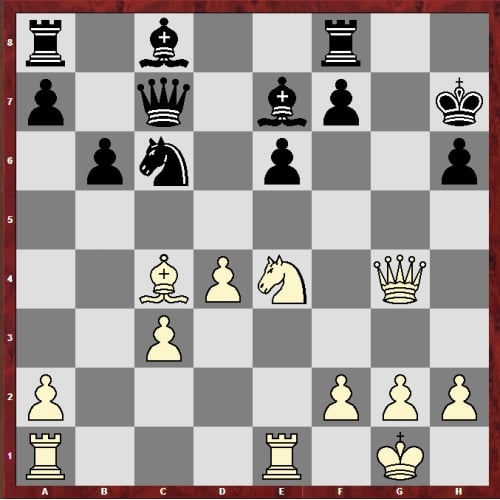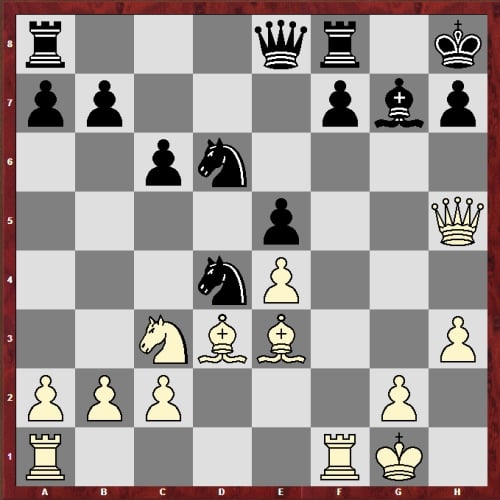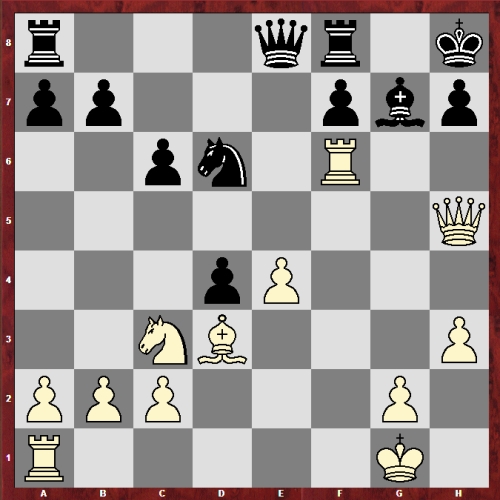Chess Puzzle with FIDE Master Dennis Monokroussos
Greetings again!
After a bit of a hiatus, we resume our series. We left off last time with a little chess puzzle:

Howell-Bitalzadeh Chess Puzzle
White has a very nice way to win here, by creating a battery with his queen and bishop on the b1-h7 diagonal. The only problem is that Black can close this diagonal with .f5, and that gives us the hint we need to win:
17.Nf6+! If Black takes, then 18.Bd3+ Kh8 19.Qe4 forces mate or wins the house (Black can avoid an immediate mate with 19.Qxh2+ 20.Kxh2 Be5+ and .f5, ridiculous as that is, and if White tries to be clever with 20.Kf1 Black can play 20.Qxg2+ 21.Kxg2 Rg8+ and 22.Rg7), while if 17.Kh8 then 18.Qe4 Bxf6 19.Bd3 does the trick.
Here’s a second example to help you remember this theme. The chess board position is from the game Robert Fischer-Pal Benko, from the 1963 U.S. Championship.

Chess Move 17… Qe8.
Here it looks as if 18.Bxd4 exd4 19.e5 might win, threatening the knight on d6 as well as the bigger threat of 20.Qxh7 mate, but Benko had prepared a defense. (Do you see it?) After 19.e5, Black would play 19.f5!, when he’s not even worse. The mate threat is prevented and the discovered attack on White’s queen puts an end to White’s kingside ambitions. White must trade queens, and after 20.Qxe8 Nxe8 21.Na4 Bxe5 the only one who can be better here is Black.
So how does White win? With the same trick from the Howell game: 18.Bxd4 exd4 19.Rf6!!

Chess Move 19….Rf6!!
Now 20.e5 is coming, and Black has no good way to prevent it. White is winning a piece here, and Benko resigned a few moves later. This motif, this kind of sacrifice, is typically labeled one of obstruction. It isn’t usually covered in beginning and intermediate tactics chess books, but it’s an important part of the chess player’s toolbox. Look for it, and you’ll see that it’s a more typical theme than you might have thought.
Ultimately, the goal is for it to become a part of your own chess games as well, and I wish you all success in implementing it in your own play.


Leave a Reply